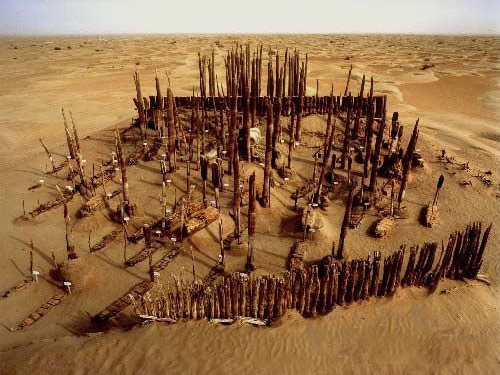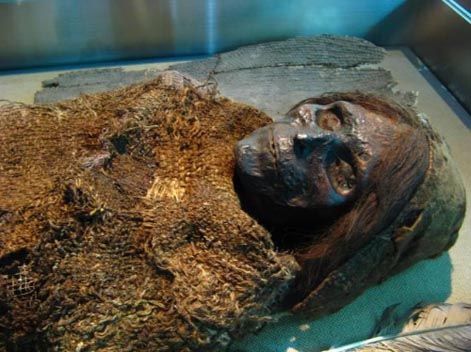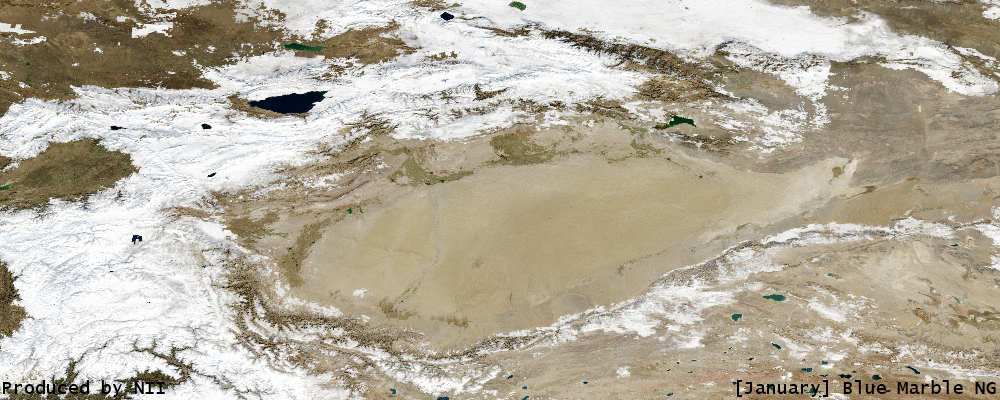

This was once the capital of a kingdom! Beginning around 2 BC, the kingdom of Loulan on the eastern end of the Taklamakan Desert had a city of the same name as its capital. At the time, the nearby lake Lop Nur was big and full of water. Now it's mostly dry, and the city has been abandoned for centuries.
This photo is from the China Expat website. I'd like to go there, but I probably won't. Why not? On this site, Ernie Diaz writes:
Korla, lying on the route between Urumqi and Kashgar, is the only city of substance in the vicinity of Loulan. From there, excursions can be arranged, involving camels as well as automobile. True, it takes considerable trouble to see this place that isn't there anymore. Such is the price of adventure.How to get there: A trip to the Ancient City of Loulan is not recommended to casual tourists because the journey is difficult and Loulan's remote location and harsh natural environment can prevent help reaching you in the event of an emergency. But if you are determined to go, please read the following tips carefully:
1. The Milan 36 Tuanchang, located 74 kilometers West of the county seat of Ruoqiang, is the best place from which to begin a Loulan exploration. You need to drive North-East for 222 kilometers and it will require constant use of GPS and a compass to stop yourself from getting lost. The condition of the ground makes driving very difficult, so your speed at points might be limited to about 3 kilometers per hour.
2. Vehicles can go no closer than 18 kilometers to the ruins of the ancient city, and you will have to finish the rest of the journey by foot or by camel.
3. The best time to visit Loulan is during mid-April and mid-October, when it is less windy in the desert.
4. You must have company and several off-road vehicles to go to Loulan. Other necessities include car-repair tools, GPS, satellite phone and medicine, as well as water and food that can last for at least 15 days.
5. The temperature gap between the daytime and night can be huge in the desert, so make sure you have appropriate clothing. And it is a good idea if your clothes and tents are in a striking color so rescuers can easily spot them in an emergency.

The Beauty of Loulan is a mummy found in 1980 in the long-abandoned city of Loulan near the east edge of the Taklamakan Desert. She is 3800 years old! She has high cheekbones, a high bridged nose and blonde hair. She is 162 centimeters tall — that's 5'2'', for those upholding the old Imperial system of units. She died sometime in her 40s, and she's dressed in a red robe, her hair crisply braided. Over 200 mummies of this sort have been found in and near the Taklamakan Desert. DNA testing shows that they have haplogroup R1a Y-DNA, which is characteristic of East-Central Europe, Central Asia and the Indus Valley.
In China, where the central government is fighting Uyghur rebels, this discovery has stirred up controversy — since there's an argument about who really 'owns' the province of Xinjiang:
Some Uyghurs claim the Beauty of Loulan as one of their own. But Victor Mair, an expert on this subject, says the Uyghurs came later:
From the evidence available, we have found that during the first 1,000 years after the Loulan Beauty, the only settlers in the Tarim Basin were Caucasoid. East Asian peoples only began showing up in the eastern portions of the Tarim Basin about 3,000 years ago, Mair said, while the Uyghur peoples arrived after the collapse of the Orkon Uyghur Kingdom, largely based in modern day Mongolia, around the year 842.Personally I don't think archaeology is a good way to settle political struggles, so don't think I'm taking a side here! I'm just trying to get to know this part of the world.

Surrounded by mountains whose snow cover changes with the seasons, the Taklamakan Desert in western China stays remarkably unchanged through the year. But if you look carefully, you can see two rivers that flow north across the desert - and the area around them turns green when the snow melts!
These are the White Jade and Black Jade Rivers — the Karakash and Yurungkash. When the snow melts, they flow north from the Kunlun Mountains into the Taklamakan Desert. The White Jade River actually carries chunks of white jade down from the mountains... I don't know what the deal is with the Black Jade River. Anyway, they merge in the middle of the desert and form the Khotan River about 145 kilometers north of the old Silk Road town of Khotan. The Khotan River then flows 290 kilometers further north across the desert, and finally empties itself into the Tarim River, which runs east across the desert's north edge.
For a long time, these rivers running north across the Taklamakan were the best way to get across that part of the desert.
The city of Khotan was the capital of the Kingdom of Khotan for a thousand years! I've got to tell you about this kingdom someday...

Behold, I am living badly, not well, wretchedly, and I consider myself dead. Again and again I sent you letters, but I haven't received a single one from you, and I have lost hope in you. My misfortune is this: I have been stuck in Dunhuang for three years thanks to you.... I obeyed your command and came to Dunhuang and did not observe my mother's bidding, or that of my brothers. Surely the gods were angry with me on the day when I did your bidding! I would rather be a dog's or a pig's wife than yours!This letter was discovered in 1907 by the famous British archaeologist Aurel Stein. It was in a mailbag in a Chinese watch tower near the Jade Gate, a fortified outpost 90 kilometers west of Dunhuang, a town at what was then the edge of China, on the Silk Road. It dates to around 314 AD. The mailbag contains some letters addressed to Samarkand, so that's probably where it was going.
This letter was written by a woman named Miwnay, whose husband had abandoned her. She didn't have enough money to take a caravan out of Dunhuang. We'll never know what happened to her.
She wrote her letter in Sogdian, a language in the Iranian family. Sogdiana was an ancient civilization centered in what's now Tajikistan and Uzbekistan, with Samarkand as one of its most famous cities. It's one of those mysteries that lures me to the Silk Road....
I cannot tell a lie: the letter I'm talking about is not the one in the picture here. The picture shows another letter in Sogdian found in the same mailbag, called Sogdian Ancient Letter No. 2. I'm talking about Sogdian Ancient Letter No. 3. For more see:
© 2013 John Baez
baez@math.removethis.ucr.andthis.edu